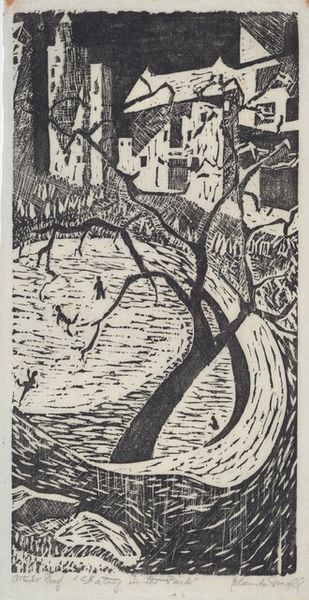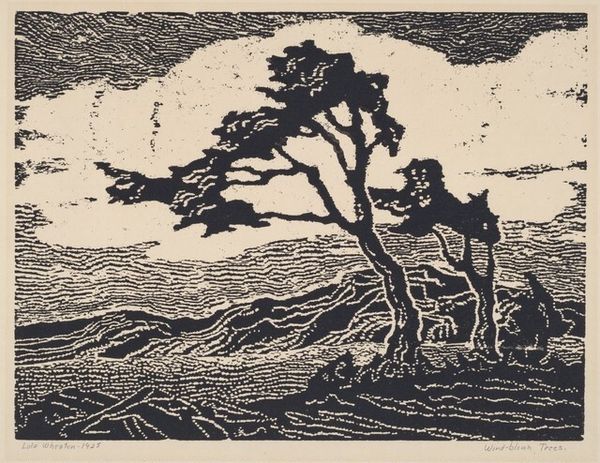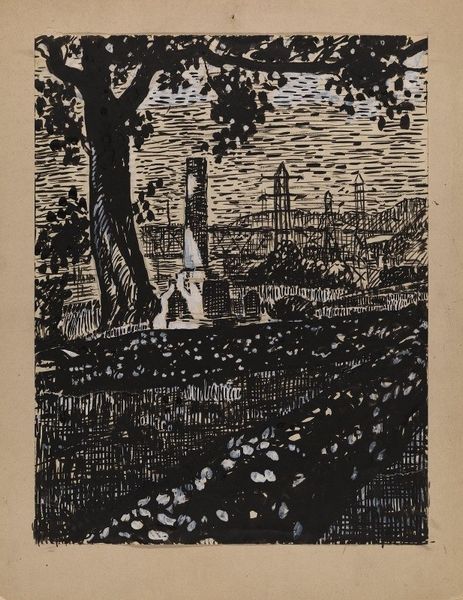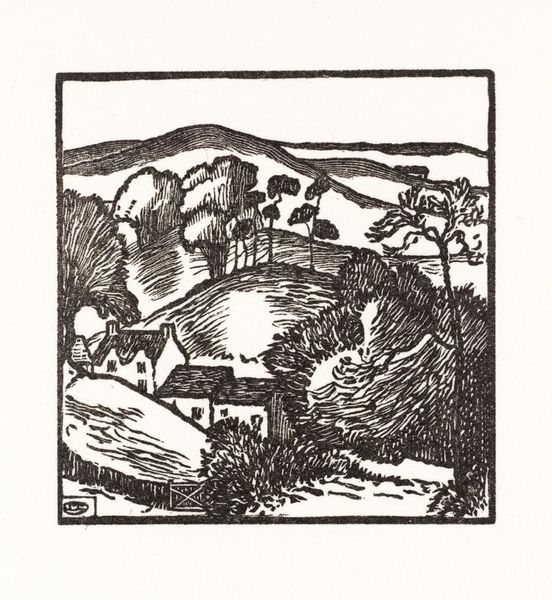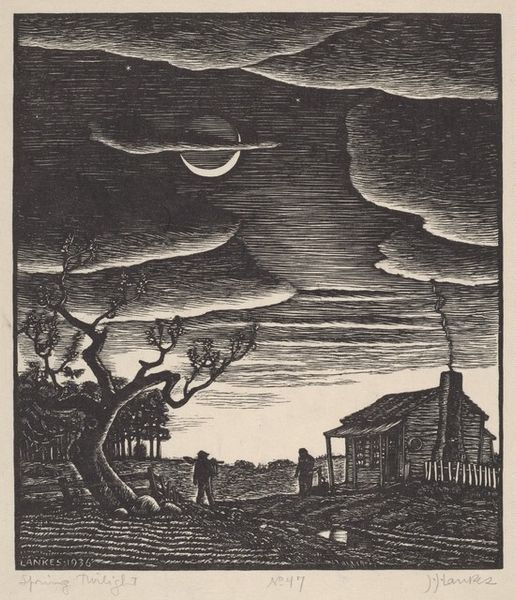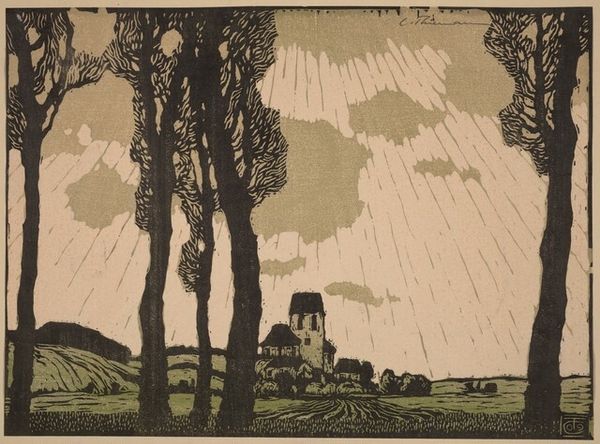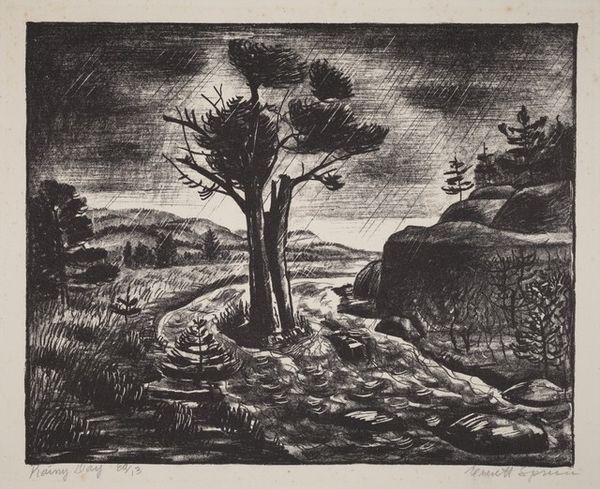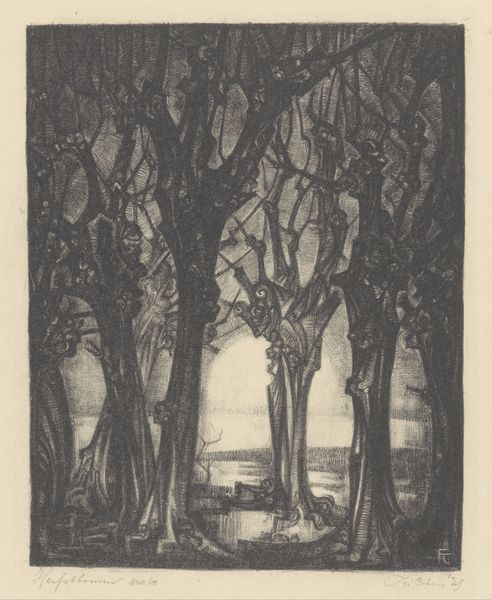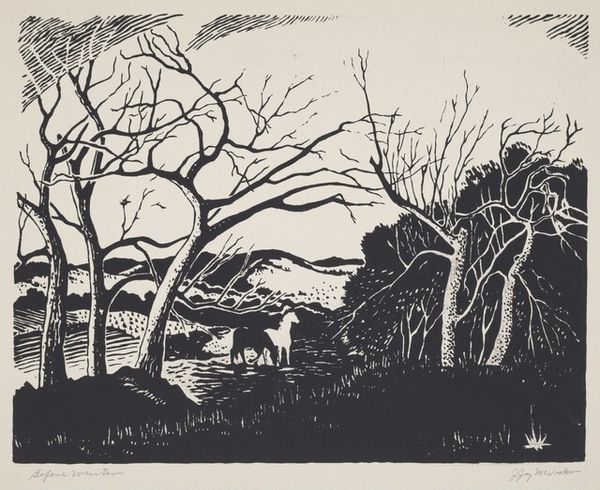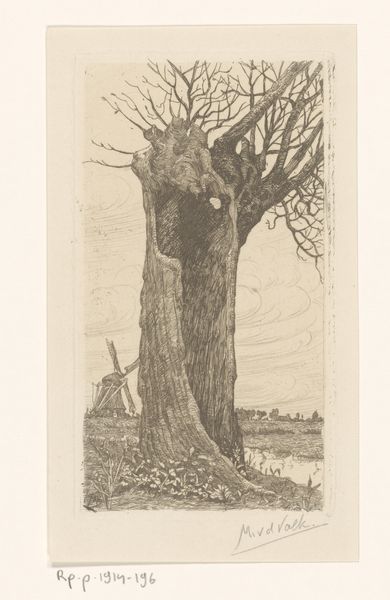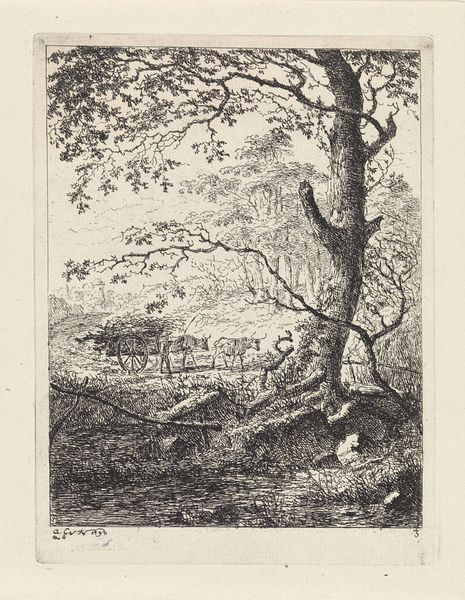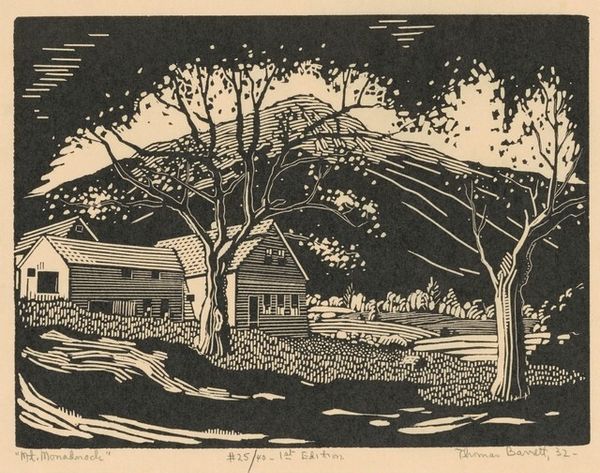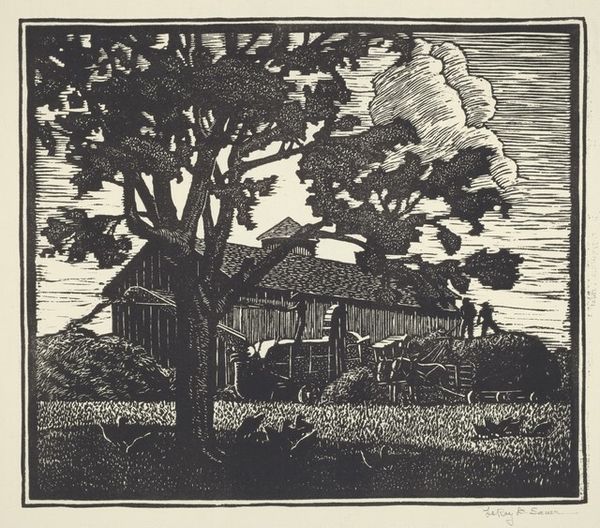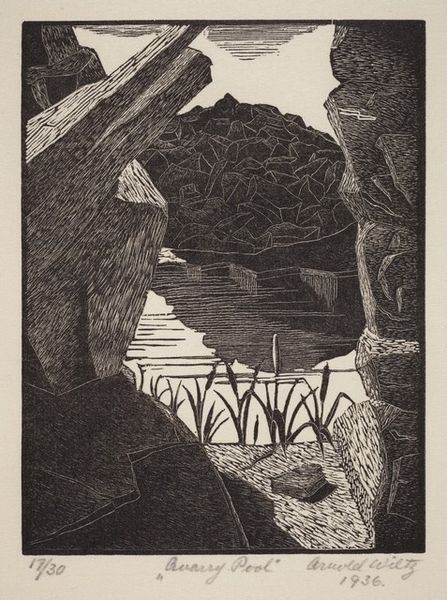
print, woodcut
# print
#
landscape
#
expressionism
#
woodcut
Dimensions: image: 25.4 × 30.5 cm (10 × 12 in.) sheet: 27.9 × 35.6 cm (11 × 14 in.)
Copyright: National Gallery of Art: CC0 1.0
Curator: Here we have Birger Sandzén's woodcut from 1921, "Lake in the Rockies." It presents a stark landscape in monochrome. Editor: My first impression is the feeling of stillness and strength, despite the turbulence implied by the lines. It's like looking at nature holding its breath. Curator: Indeed. Sandzén’s work often grappled with themes of nature and spirituality, placing it within a broader context of early 20th-century American art which saw an increased interest in nature as a refuge from industrialization. Editor: Do you think his technique emphasizes this feeling of refuge? The woodcut’s starkness reminds me of woodcuts from the German Expressionist movement, communicating an urgency or tension despite depicting something as traditionally pastoral as a lake scene. Curator: That's a shrewd connection to Expressionism, since Sandzén was exploring simplification and strong contrasts to elicit emotions. He was a Swedish immigrant, steeped in European artistic traditions, attempting to translate the grandeur of the American West, especially the Rockies. Editor: I find the simplification deeply compelling. Look how the textures become almost abstract up close! The marks representing the sky or the lake have a rhythm that resonates. Sandzén seemed to explore that rhythm by depicting wilderness at a moment when ideas about nature were becoming sites of intense cultural negotiation in light of urban expansion. Curator: Precisely. Museums have also historically displayed landscape art as a representation of a national ideal. The untamed landscape, a vision of American grandeur available for popular consumption. Editor: It's crucial to remember who got to access and define that "national ideal." Early conservation efforts, especially around iconic landscapes, often came at the expense of Indigenous communities, and the aesthetics perpetuated through landscapes also excluded artists from other minority groups. How do we exhibit art like this responsibly? Curator: You are absolutely right, we must think of whose vision it represents and whose story has been traditionally untold. We strive to acknowledge those biases, opening dialogues around the politics of representation and power. I appreciate your thoughtful analysis. Editor: It's in facing those questions head-on that art continues to be a space for progress. I am thankful for our dialogue.
Comments
No comments
Be the first to comment and join the conversation on the ultimate creative platform.
